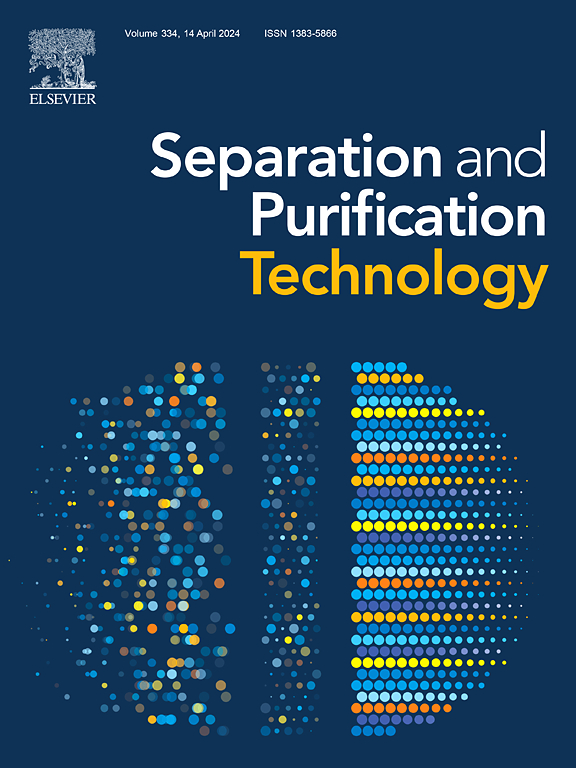Optimized electrochemical recovery of Lithium-Ions from spent battery cells using carbon-coated lithium-iron-phosphate
IF 8.1
1区 工程技术
Q1 ENGINEERING, CHEMICAL
引用次数: 0
Abstract
Lithium-ion batteries play a crucial role in powering electric vehicles and portable electronics, making them indispensable in modern technology and driving a significant increase in global lithium demand. With more and more batteries reaching their end of life and the challenges of lithium extraction, including rising prices, geopolitical constraints, and environmental concerns, the efficient recovery of lithium from spent battery cells is crucial for sustainable battery recycling. While state-of-the-art battery recycling focuses mainly on pyro and hydrometallurgical methods, electrochemical recycling methods can be an environmentally friendly, energy-efficient, and cost-effective alternative. This study optimizes an energy-efficient electrochemical method for selective LiCl extraction from leaching solutions derived from cathode materials of typical battery cell formats (LCO). This places our electrochemical separation within the hydrometallurgical processing of spent battery materials (black mass) and prior to subsequent lithium refining steps. Applying carbon-coated LFP electrodes for selective lithium recovery yielded an average uptake capacity of 11.4 mgLi gLFP/C-1 over 300 cycles, maintaining a significant discharge capacity (30 mAh g−1) after 500 cycles.
求助全文
约1分钟内获得全文
求助全文
来源期刊

Separation and Purification Technology
工程技术-工程:化工
CiteScore
14.00
自引率
12.80%
发文量
2347
审稿时长
43 days
期刊介绍:
Separation and Purification Technology is a premier journal committed to sharing innovative methods for separation and purification in chemical and environmental engineering, encompassing both homogeneous solutions and heterogeneous mixtures. Our scope includes the separation and/or purification of liquids, vapors, and gases, as well as carbon capture and separation techniques. However, it's important to note that methods solely intended for analytical purposes are not within the scope of the journal. Additionally, disciplines such as soil science, polymer science, and metallurgy fall outside the purview of Separation and Purification Technology. Join us in advancing the field of separation and purification methods for sustainable solutions in chemical and environmental engineering.
 求助内容:
求助内容: 应助结果提醒方式:
应助结果提醒方式:


